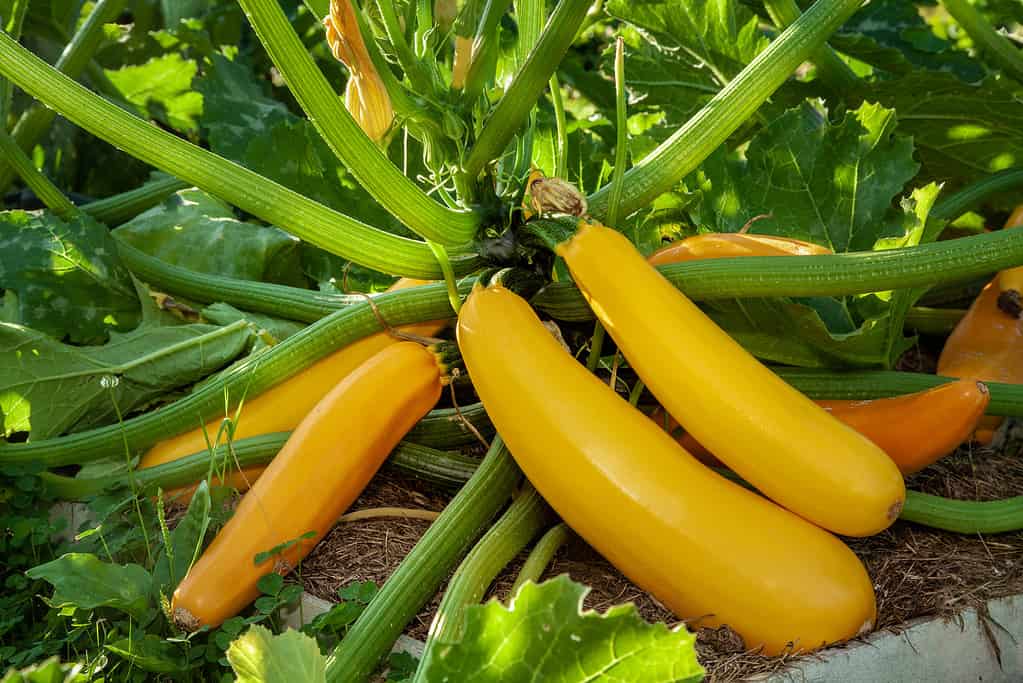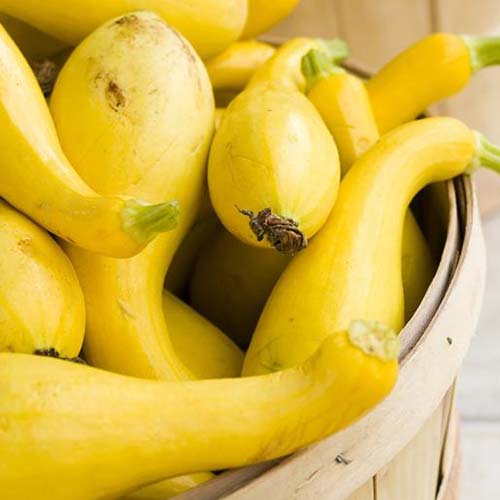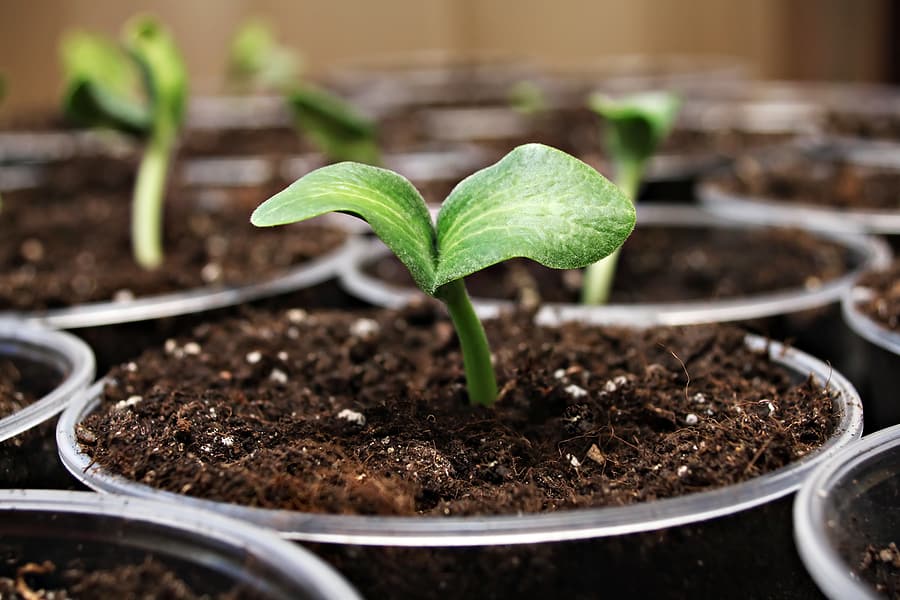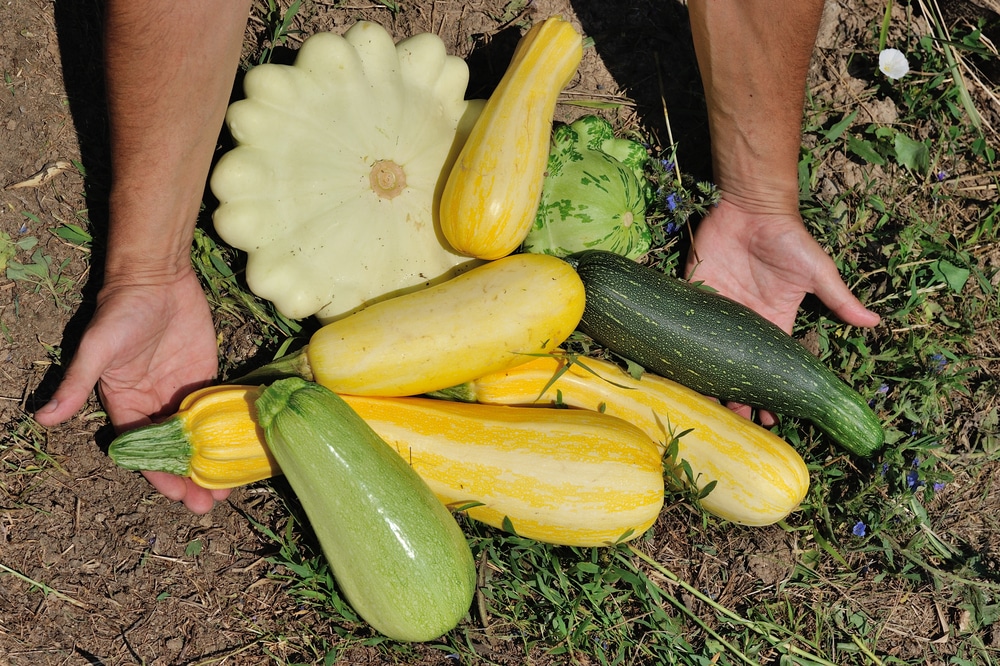Grow Your Own Golden Bounty: A Complete Guide To Growing Yellow Squash
Grow Your Own Golden Bounty: A Complete Guide to Growing Yellow Squash
Yellow squash is a delicious and versatile vegetable that is easy to grow in your own backyard. With a little care and attention, you can enjoy fresh yellow squash from your garden all summer long.
In this blog post, we will provide you with a complete guide to growing yellow squash. We will cover everything from choosing the right variety to harvesting your crop. So whether you are a beginner gardener or a seasoned pro, this guide has something for everyone.
Choosing the Right Variety
There are many different varieties of yellow squash available, so it is important to choose one that is right for your climate and growing conditions. Some popular varieties include:
- Crookneck squash: This is the most common type of yellow squash. It has a curved neck and a smooth, yellow skin.
- Straightneck squash: This variety is similar to crookneck squash, but it has a straighter neck.
- Pattypan squash: This variety has a flat, disc-shaped appearance.
- Scallop squash: This variety has a scalloped edge and a creamy yellow flesh.
When to Plant
Yellow squash is a warm-season vegetable, so it is important to plant it after the last frost. In most areas, this is around the time of Memorial Day.
Where to Plant
Yellow squash prefers full sun and well-drained soil. If your soil is heavy clay, you may need to add some compost or sand to improve drainage.
How to Plant
Squash seeds can be planted directly in the ground or started indoors. If you are planting directly in the ground, sow the seeds 1 inch deep and 2-3 inches apart. If you are starting indoors, sow the seeds 4-6 weeks before the last frost.
Watering
Yellow squash needs regular watering, especially during hot, dry weather. Water your plants deeply once a week, or more often if needed.
Fertilizing
Yellow squash benefits from a light application of fertilizer every few weeks. A balanced fertilizer, such as 10-10-10, is a good choice.
Pests and Diseases
Yellow squash is susceptible to a few pests and diseases, such as squash bugs, powdery mildew, and vine borers. If you see any signs of pests or diseases, it is important to treat them immediately.
Harvesting
Yellow squash is ready to harvest when it is 4-6 inches long. To harvest, simply cut the squash from the vine with a sharp knife.
Storing
Yellow squash can be stored in the refrigerator for up to 5 days. You can also freeze yellow squash for longer storage.
Enjoy!
Now that you know how to grow yellow squash, it is time to get started. With a little care and attention, you will be enjoying fresh yellow squash from your garden all summer long.
Yellow squash is a delicious and versatile vegetable that is easy to grow in your own backyard. If you are thinking about growing yellow squash, I recommend visiting Garden Wiki. This website has a wealth of information on how to choose the right variety of yellow squash for your climate, how to prepare the soil, how to plant the seeds, and how to care for your plants.
Garden Wiki also has a section on common pests and diseases that can affect yellow squash plants, as well as tips on how to prevent and control these problems. In addition, the website has a collection of recipes that you can use to enjoy your homegrown yellow squash.
I have personally found Garden Wiki to be a valuable resource for growing yellow squash. The information on the website is clear, concise, and easy to follow. I highly recommend checking it out if you are thinking about growing yellow squash.
FAQ of growing yellow squash
Q: When is the best time to plant yellow squash?
A: Yellow squash is a warm-season crop, so it is best to plant it after the last frost in spring. The ideal soil temperature for planting yellow squash is 65-75 degrees Fahrenheit.
Q: How much sun does yellow squash need?
A: Yellow squash needs at least 6 hours of full sun per day. If you live in a hot climate, you may need to provide some afternoon shade.
Q: What kind of soil does yellow squash need?
A: Yellow squash prefers rich, well-drained soil. The soil should have a pH of 6.0-6.8. You can improve the drainage of your soil by adding compost or sand.
Q: How often do I need to water yellow squash?
A: Yellow squash needs consistent moisture, but it should not be overwatered. Water your plants deeply once a week, or more often if the weather is hot or dry.
Q: How long does it take yellow squash to grow?
A: Most yellow squash varieties will be ready to harvest about 60 days after planting.
Image of growing yellow squash
- Image 1: A yellow squash plant with several fruits growing on it. The plant is green and has large, dark green leaves. The fruits are yellow and have a smooth skin.

- Image 2: A close-up of a yellow squash fruit. The fruit is about the size of a baseball and has a smooth, yellow skin. The flesh of the fruit is yellow and has a mild, sweet flavor.

- Image 3: A group of yellow squash seedlings growing in a pot. The seedlings are about 2 inches tall and have two leaves each. The leaves are green and have a slightly serrated edge.

- Image 4: A gardener harvesting yellow squash from a plant. The gardener is wearing gloves and is using a knife to cut the squash from the vine. The squash is about the size of a grapefruit and has a smooth, yellow skin.

- Image 5: A cooked yellow squash dish. The dish is a yellow squash soup with diced tomatoes, onions, and garlic. The soup is served in a bowl and garnished with fresh parsley.

Post a Comment for "Grow Your Own Golden Bounty: A Complete Guide To Growing Yellow Squash"